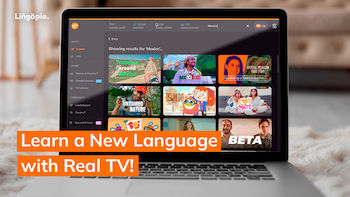
Let us remember: One book, one pen, one child, and one teacher can change the world.
– Malala Yousafzai
Learning Spanish at a low pace means taking fewer lessons and spend more time doing the activities you love in Spanish. If you are something like me, you are a bookworm (ratón de biblioteca) and you read anything that falls under your eyes. My entry point to learning English and become fluent and accurate in my speech has always been through books.
That’s why when I was thinking about what to write about that would be helpful in your Spanish learning journey I thought: books in Spanish!
I have for you 5 books in Spanish, from Spanish speaking authors, perfect for an intermediate to advanced Spanish level.
I present you with a combination of historical, feminist, light romance, and philosophical concepts.
1. Las Sinsombrero: sin ellas, la historia no estaría completa, by Tània Balló
“A ellas nadie las esperaba con los brazos abiertos, reconocerá Tània Balló, y así fue verdaderamente; pero sin ellas la historia no está completa.”
– Tania Balló
“Nobody was waiting for them with open arms, admitted Tània Balló, and that was the truth; but without them, history is not complete”.
This book, part of a bigger project, seeks to get out of oblivion an exceptional group of women who belonged to the Generation of 27. The Generation of ’27 (Generación del 27 in Spanish) was an influential group of poets that arose in Spanish literary circles between 1923 and 1927, essentially out of a shared desire to experience and work with avant-garde forms of art and poetry. This group of avant-garde artist is part of all education syllabus, however, is only the male members who are studied.
Las Sinsombrero by Tània Balló, is based on a documentary under the same name that she co-directed, and that was aired in TVE (Televisión Española) in 2015. The documentary and book-related the life and works of 8 of the women part of the Generation of 27.
Reading this book was bittersweet. As a PhD in Spanish literature, I studied and knew all the Spanish authors from the Middle Ages to the present—or so I thought. I never learned a word about many of those women. And so, in a way, I felt betrayed and deceived.
But this book opened a door to a part of Spanish history that I didn’t know. It opened a door to role models who created incredible pieces of art and with whom I could also relate. The women who struggled to make themselves heard, and even if History failed them, they fought and created and led the way.
2. Rayuela, by Julio Cortázar
This book is, without a doubt, one of my favourites of all time. Rayuela (or Hopscotch in English) is a novel by Argentine writer Julio Cortázar. Written in Paris, it was published in Spanish in 1963 and English in 1966.
Rayuela is a unique novel in whatever way you look at it.
“It is a stream-of-consciousness novel which can be read according to two different sequences of chapters. This novel is often referred to as a counter-novel, as it was by Cortázar himself. It meant an exploration with multiple endings, a neverending search through unanswerable questions” [Wikipedia].
I read it twice—and it’s not a thin book nor a simple one. The first time, I followed Cortázar’s suggestion, and the second one, I chose my own path.
At the beginning of the book, Cortázar suggests the book can be read in two possible ways. First, the book can be read either in direct sequence from chapter 1 and stop at chapter 56, which, Cortázar writes, the reader can do “with a clean conscience,” or alternatively by “hopscotching” (saltando a la pata coja por las casillas pintadas en el suelo) through the entire set of 155 chapters according to the “Table of Instructions” described by the author. Cortázar also leaves the option of having the reader choose his/her own path.
In any way I read it, I permanently closed the book, thinking about and mulling over what I had just read. It is a must-read book for any Spanish learner.
3. Matar a Platón, by Chantal Maillard
Chantal Maillard is a poet, translator, and essayist. Born in Brussels in 1951, Maillard moved with her family to Spain as a child and has won the Premio Nacional de Poesía for Killing Plato or Matar a Platón, the book I present you here.
Matar a Platón is a numbered sequence of twenty-eight poems organized around an accident: a pedestrian has been hit by a truck and is dying in the middle of the road. Various characters appear: a philosopher, a woman smoothing out her stocking, the truck driver, a boy on a balcony, a poet… At the bottom of the page, another tale unfolds: a woman bumps into an old friend, a male poet who has written a book called Killing Plato about “a woman who the force of a sound has knocked over”.
This book is about an instant in which multiple lives converge. Maillard weaves a complex net around this instant, creating a game of mirrors, images, gazes…
Thought-provoking.
4. Mujeres que compran flores, by Vanessa Montfort
If the previous three books were deeper and heavier in some ways, Vanessa Monfort’s book is the opposite. It is a funny, romantic, and honest book about friendship, feminine independence, and the dreams of modern women.
It starts with the main character’s heartbreak, a cause of the end of her relationship, and what it means to start from scratch through the stories of a group of women who are at a crossroads in their lives.
In a lighthearted manner, this book is a mirror of current Spanish society. With a sense of humour, it illustrates the fears and desires of women in a Patriarchal society.
Vanessa Monfort is a Spanish novelist, playwright and journalist.
5. El Aleph, by Jorge Luis Borges
The Aleph and Other Stories (Spanish: El aleph, 1949) is a book of short stories by Argentine writer Jorge Luis Borges. The title work, “The Aleph,” describes a point in space that contains all other spaces at once and presents the idea of infinite time. Most of the stories in that book belong to the fantasy genre and mention themes such as identity and immortality.
El Aleph is, according to Borges, “el punto mítico del universo donde todos los actos, todos los tiempos (presente, pasado y futuro), ocupan “el mismo punto, sin superposición y sin transparencia”.
Jorge Luis Borges was an Argentine short-story writer, essayist, poet, and translator who was a key figure in Spanish-language and universal literature.
This is my shortlist of recommended books in the Spanish language. Of course, there are many other books I enjoyed reading and could recommend to you according to genre or topic. But these five have a special place in my heart. I remember being engrossed reading them, spending all the hours in the day turning their pages, and falling asleep with them.
Have you read them? Did you like them?
Do you have any other recommendations?
Share with us in the comments!







Una idea sobre “5 must-read books to improve your Spanish”
Innformative article, exactly wwhat I was looking for.